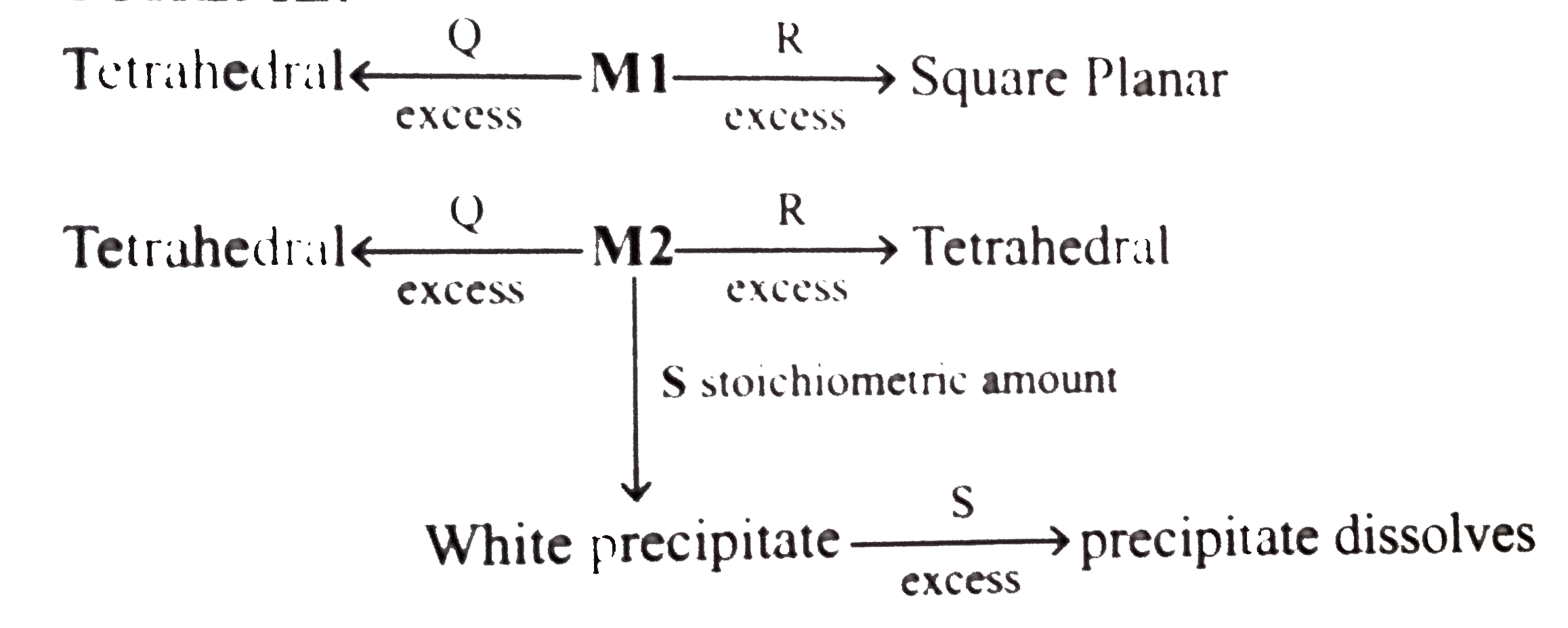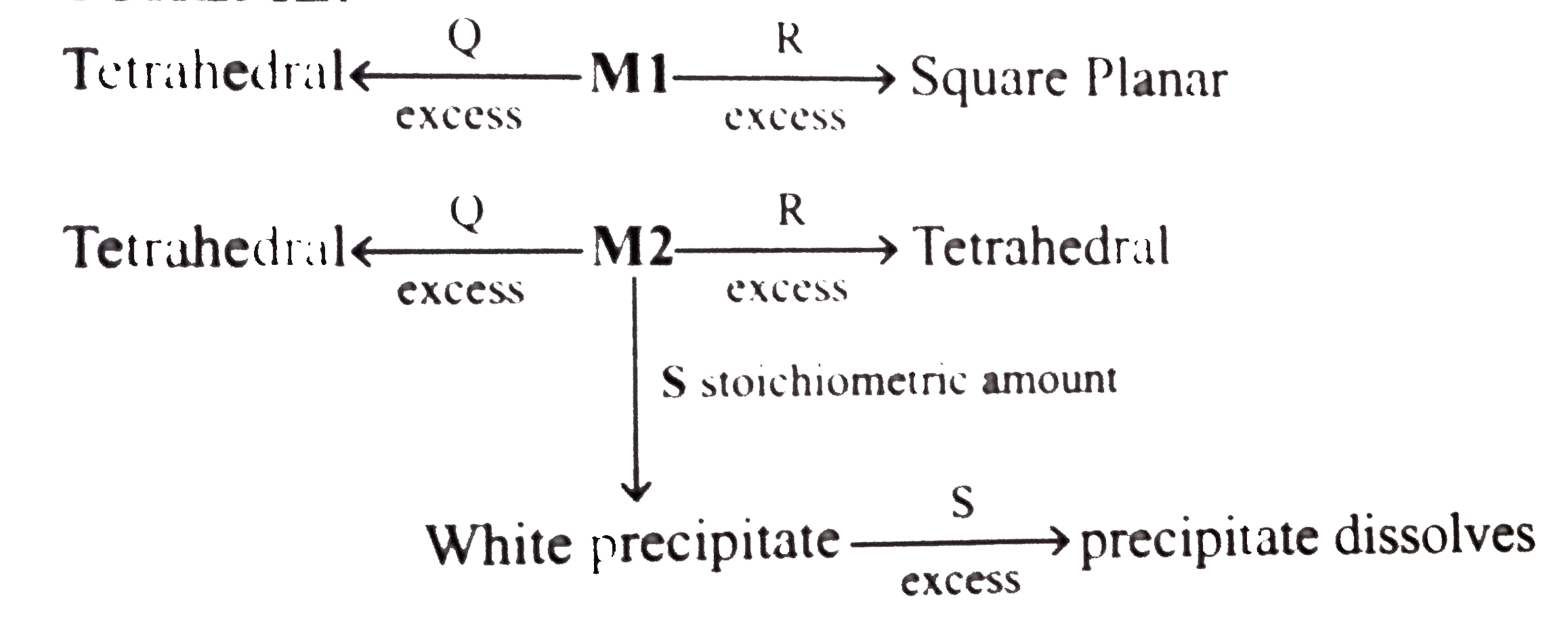Zinc(II) ion on reaction with NaOH first give a white precipitate which dissolves in excess of NaOH due to the formation of :
ZnO
Zn(OH)2
[Zn(OH)4]2−
[Zn(H2O)4]2−
The correct Answer is:C
To solve the question regarding the reaction of Zinc(II) ion with NaOH, we will follow these steps:
Step 1: Understand the Reaction
When Zinc(II) ions (Zn²⁺) react with sodium hydroxide (NaOH), they initially form a precipitate. This is a common reaction in inorganic chemistry involving metal ions and hydroxides.
Step 2: Write the Initial Reaction
The reaction of Zinc(II) ions with NaOH can be represented as follows:
Zn2++2NaOH→Zn(OH)2↓+2Na+
Here, Zinc(II) hydroxide (Zn(OH)₂) is formed, which is a white precipitate.
Step 3: Identify the Behavior of the Precipitate
The white precipitate of Zinc(II) hydroxide (Zn(OH)₂) can dissolve in excess NaOH. This is a characteristic behavior of amphoteric hydroxides, which can react with both acids and bases.
Step 4: Write the Reaction in Excess NaOH
When excess NaOH is added, Zinc(II) hydroxide reacts further to form a soluble complex ion:
Zn(OH)2+2NaOH→Na2(Zn(OH)4)
This results in the formation of the tetrahydroxozincate(II) ion, (Zn(OH)4)2−.
Step 5: Conclusion
Thus, the white precipitate formed initially dissolves in excess NaOH due to the formation of the complex ion (Zn(OH)4)2−.
Final Answer
The white precipitate formed is Zinc(II) hydroxide (Zn(OH)₂), which dissolves in excess NaOH to form the complex ion (Zn(OH)4)2−.
---
When Zinc(II) ions (Zn²⁺) react with sodium hydroxide (NaOH), they initially form a precipitate. This is a common reaction in inorganic chemistry involving metal ions and hydroxides.
The reaction of Zinc(II) ions with NaOH can be represented as follows:
The white precipitate of Zinc(II) hydroxide (Zn(OH)₂) can dissolve in excess NaOH. This is a characteristic behavior of amphoteric hydroxides, which can react with both acids and bases.
When excess NaOH is added, Zinc(II) hydroxide reacts further to form a soluble complex ion:
Thus, the white precipitate formed initially dissolves in excess NaOH due to the formation of the complex ion (Zn(OH)4)2−.
The white precipitate formed is Zinc(II) hydroxide (Zn(OH)₂), which dissolves in excess NaOH to form the complex ion (Zn(OH)4)2−.
Topper's Solved these Questions
- d-BLOCK ELEMENTSBook:VK JAISWAL ENGLISHChapter:d-BLOCK ELEMENTSExercise:ASSERTION-REASON TYPE QUESTIONS
Explore 32 Videos
- d-BLOCK ELEMENTSBook:VK JAISWAL ENGLISHChapter:d-BLOCK ELEMENTSExercise:SUBJECTIVE PROBLEMS
Explore 6 Videos
- CO-ORDINATION COMPOUNDSBook:VK JAISWAL ENGLISHChapter:CO-ORDINATION COMPOUNDSExercise:LEVEL 2
Explore 144 Videos
- ENVIRONMENTAL CHEMISTRYBook:VK JAISWAL ENGLISHChapter:ENVIRONMENTAL CHEMISTRYExercise:ASSERTION-REASON TYPE QUESTIONS
Explore 14 Videos
Similar Questions
Knowledge Check
A metal M reacts with sodium hydroxide to give a white precipitate X which is soluble in excess of NaOH to give Y. Compound X is soluble in HCI to form a compound Z. Identify M.X,Y and Z
M , X , Y, ZASi,SiO2,Na2siO3,SiCI4BAI,AiI(OH)3,NaMgO3,AICI3CMg,Mg(Oh)3,NaMgO3,MgCI2DCa,Ca(OH)2,Na2CO3,NaHCO3
If group IV the ppt of Zn(OH)2 dissolve in excess of NaOH due to the formation of
View SolutionCu2+ ions give white precipitate with :
View SolutionAn aqueous solution of metal ion MI reacts separately with reagents Q and R in excess to give tetrahedral and square planar complexes, respectively An aqueous solution of another metal ion M2 always forms tetrahedral complexs with theses reagents. Aqueous solution of M2 on reaction with reagent S gives white precipitate which dissolves in excess of S The reactions are summarised in the scheme given below: SCHEME :

What is M2
View SolutionAn aqueous solution of metal ion MI reacts separately with reagents Q and R in excess to give tetrahedral and square planar complexes, respectively An aqueous solution of another metal ion M2 always forms tetrahedral complexs with theses reagents. Aqueous solution of M2 on reaction with reagent S gives white precipitate which dissolves in excess of S The reactions are summarised in the scheme given below: SCHEME :

What is S?
View SolutionA solution of a metal ion when treated with KI solution gives a red precipitate which dissolves in excess of KI solution to give a colourless solution. Moreover, the solution of the same metal ion on treatment with the solution of cobalt (II) thiocyanate gives rise to a deep blue crystalline precipitate. The metal ion is
View SolutionA certain inorganic compound (X) shows the following reactions:
(i) On passing H2S through an acidified solution of (X), a brown ppt is obtained.
(ii) The ppt. obtained in first step dissolves in excess of yellow ammonium sulphide.
(iii) On adding an aq. solution of NaOH to solution of (X), first a white ppt. is obtained which dissolves in excess of NaOH.
(iv). The aq. solution of (X) roducos forric chloride Identify the cation of X and give chemical equations for the steps (0).(1). (iii) and (iv).
View SolutionIdentify the cation in each of the following case
Ammonium hydroxide solution when added to the solution gives bluish white precipitate which dissolves in excess to give deep blue solution.
View Solution